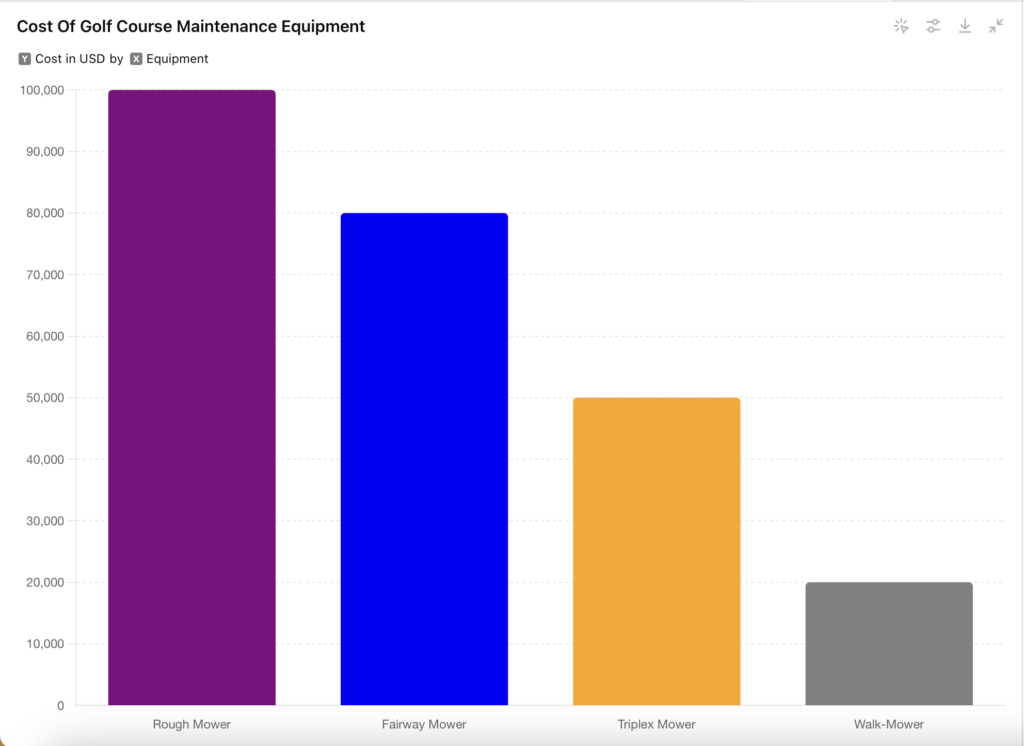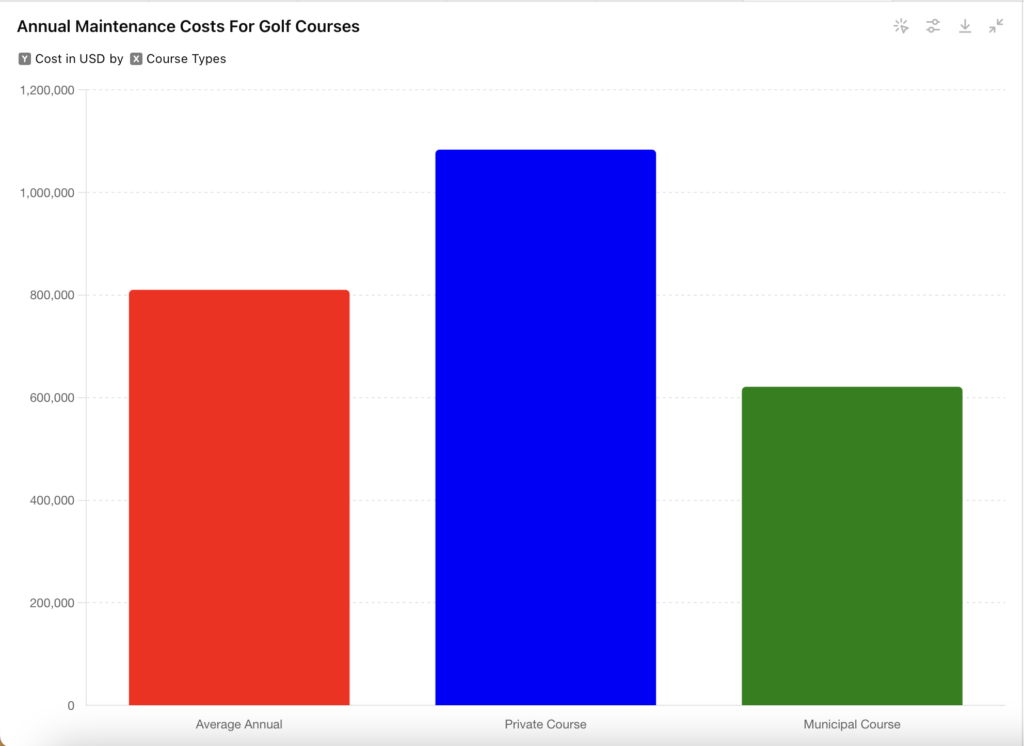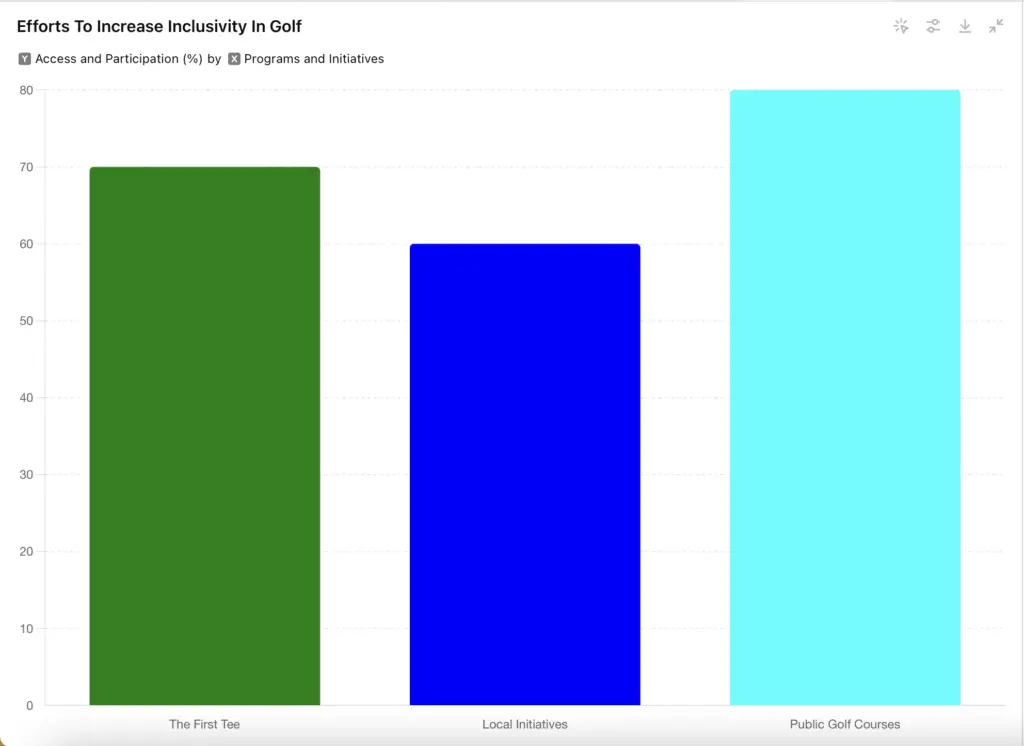Physical Address
304 North Cardinal St.
Dorchester Center, MA 02124
Physical Address
304 North Cardinal St.
Dorchester Center, MA 02124
Golf is often seen as a sport for the rich, played on beautiful green courses and in fancy country clubs. But is it fair to call golf an elitist sport? This question came up during a recent debate between Joe Biden and Donald Trump, where they talked about their golf skills.
This article will explore why golf has this elitist image, its history, its impact on society, and what is being done to make it more inclusive.
| Category | Statistic |
|---|---|
| Demographics | |
| Total Golf Participants (2023) | 45 million |
| Increase in Female Golfers | 23% since 2018 |
| Increase in Minority Golfers | 43% since 2018 |
| Juniors Playing Golf | 40% increase since 2019 |
| Female On-Course Golfers | Over 6 million |
| Financial Barriers | |
| Average Annual Maintenance Cost | $810,254 |
| Private Course Maintenance Cost | $1,083,647 |
| Municipal Course Maintenance Cost | $621,190 |
| Average Golf Club Membership Fee | Over £1,000 per year |
| Cost of Equipment | |
| Rough Mower | $100,000 |
| Fairway Mower | $80,000 |
| Triplex Mower | $50,000 |
| Walk-Mower | $20,000 |
| Efforts to Increase Inclusivity | |
| Community Programs | The First Tee, various local initiatives |
| Public Golf Courses | Affordable green fees, increased public access |
| Professional Golf Impact | |
| Increase in Diverse Athletes | Notable successes like Tiger Woods, Annika Sörenstam |
| Media Coverage | Highlighting stories of diverse golfers and inclusive initiatives |
| Technological Advancements | |
| Virtual Golf Simulators | Providing affordable alternatives to traditional golf courses |
| Online Platforms | Increasing accessibility and attracting new players |
This table provides a comprehensive overview of the key statistics related to golf’s elitist image and the efforts being made to make the sport more inclusive. It highlights the demographic changes, financial barriers, and initiatives aimed at increasing accessibility and diversity within the sport.
Golf started in 15th-century Scotland and was played by the nobility. It quickly became popular among the rich and powerful. Prestigious golf clubs, like the Royal and Ancient Golf Club of St Andrews, helped cement this elite image.
In the late 19th and early 20th centuries, country clubs in the United States made golf seem even more exclusive. These clubs were often for wealthy people only. The high cost of membership and luxurious amenities made golf seem out of reach for the average person.

One big reason golf seems elitist is the high cost. Good golf clubs, balls, and other equipment can be very expensive. Membership fees for fancy golf clubs can also be very high, making it hard for many people to afford.
Even if you don’t belong to a country club, playing golf can still be costly. Green fees, which are the charges for playing a round of golf, can be expensive. The cost of maintaining a golf course, including landscaping and staffing, adds to these high fees.

Historically, golf has been dominated by white, wealthy men. This trend has made golf seem exclusive. While there have been efforts to diversify the sport, there are still not many minorities and women in professional golf.

Movies and TV shows often show golf as a sport for the rich and powerful, reinforcing its elitist image. This cultural perception can discourage people from diverse backgrounds from taking up the sport.
In recent years, various programs have been launched to make golf more accessible. Organizations like The First Tee aim to introduce young people from diverse backgrounds to golf, providing them with the skills and opportunities to play.
To counter the high costs, many communities have developed public golf courses with affordable green fees. These courses allow people from different backgrounds to enjoy the sport without the financial burden of private club membership.

The representation of minorities and women in professional golf impacts the sport’s image. While there have been notable successes, like Tiger Woods and Annika Sörenstam, overall diversity in professional golf is still limited. Increasing the visibility of diverse athletes can help challenge the perception of golf as an elitist sport.
How golf is covered in the media also shapes public perception. Highlighting stories of diverse golfers and inclusive initiatives can help change the narrative. Media outlets should present a balanced view of golf, showcasing its accessibility and efforts to promote inclusivity.
Advancements in technology can make golf more accessible. Virtual golf simulators and online platforms can provide affordable alternatives to traditional golf courses, allowing more people to experience the sport. These innovations can help democratize golf and attract a new generation of players.
As society becomes more inclusive and diverse, there is hope that golf will become more accessible and welcoming to all. The efforts of organizations, communities, and individuals to break down barriers and promote inclusivity are crucial in shaping the future of the sport.
The question of whether golf is an elitist sport is complex. While the sport has historically been associated with exclusivity and wealth, there are ongoing efforts to make golf more inclusive and accessible. By addressing the financial barriers, challenging cultural stereotypes, and promoting diversity, the perception of golf can change. The future of golf lies in its ability to evolve and embrace a broader audience, ensuring that the sport is enjoyed by people from all walks of life.
Is golf only for the wealthy?
While golf has a reputation for being expensive, there are affordable options available, such as public courses and community programs, that make the sport accessible to a wider audience.
Why is golf considered an elitist sport?
Golf’s association with exclusive country clubs, high costs, and a predominantly affluent demographic has contributed to its elitist image.
Are there efforts to make golf more inclusive?
Yes, various initiatives and programs aim to introduce golf to diverse communities and make the sport more accessible to people from different backgrounds.
How can golf become more accessible?
Reducing the cost of equipment, offering affordable green fees, and promoting public golf courses are some ways to make golf more accessible.
What role do professional golfers play in changing perceptions?
The visibility of diverse athletes in professional golf can challenge the perception of the sport as elitist and inspire a broader audience to take up golf.
Can technology help make golf more accessible?
Yes, technological advancements such as virtual golf simulators and online platforms can provide affordable alternatives to traditional golf courses, making the sport more accessible to a wider audience.